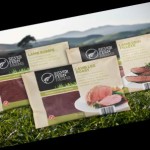 Results back from the meat at the centre of the European horsemeat scandal revealed earlier this week that a Polish supplier of filler product for the burgers is the source of the equine DNA.
Results back from the meat at the centre of the European horsemeat scandal revealed earlier this week that a Polish supplier of filler product for the burgers is the source of the equine DNA.
Tests by the Irish Food Safety Authority (FSAI) showed positive for equine DNA against meat filler – supposedly beef – imported from Poland for use in the production of burgers at the ABP-owned Silvercrest food processing plant in Ireland.
The Irish minister for agriculture, food and the marine Simon Coveney TD said the investigation had established a direct correlation between burgers in which a high level of equine DNA was detected and this raw material product. He was confident that the raw material in question was the source of equine DNA introduced into burgers manufactured at Silvercrest.
Ireland and the UK have conducted an exhaustive investigation into the source of the DNA – vital to reassure consumers and trade about the safety of the food chain.
In Ireland, over 140 samples of primary products and ingredients were tested for equine DNA at the Silvercrest plant, with three burgers and one imported ingredient testing positive for significant levels of equine DNA. The current findings of the official investigation do not show any evidence that Silvercrest deliberately used horsemeat in their production process, said the Minister.
ABP’s Yorkshire-based plant Dalepak was cleared by the British Food Standards Agency (the FSA), after samples comprising all the meat being used in the production of the suspect lines showed there was no horse or pork DNA present in any of them. Investigation continues, however, into the origin of the DNA in some Dalepak products manufactured in 2012. The FSA has been answering questions at the British Parliament’s environment select committee this week.
ABP Group management has assured the Irish Minister that it will fully comply with conditions the Minister will apply to continued production standards at Silvercrest.
Silvercrest has commenced a deep cleansing of the plant, under new management, and will be submitted to a six-moth period of scrutiny by FSAI inspectors, after which it will be reviewed, advised Coveney.
“As part of this supervision, the Department will carry out weekly sampling of production in order to provide the necessary reassurance to its customers on the integrity of the production chain. A key component of this is the company’s commitment to source all its raw material from Ireland and the UK.”
The Polish authorities have been advised and the matter is now with them, said Coveney.
It is thought that the situation has been in place for a year, as that’s the length of time the Polish supplier has been providing the filler products.
Changes at ABP
Apologising for the impact the issue had caused, Paul Finnerty, group chief executive for Silvercrest’s owner ABP Food Group said he was relieved the that the source of the problem had been identified.
“As previously stated, the company has never knowingly bought or processed horse meat and all of our purchases are from approved and licensed EU plants.”
In addition to the deep cleansing and new Silvercrest management team, ABP had undergone a Group reorganisation with responsibility for Silvercrest transferring to ABP Ireland. Its sister business in the UK, Dalepak Foods, will come under the immediate control of ABP UK. The Group is independently audting all its third party suppliers.
He noted that the source of the contaminated meat from Poland is not related to ABP’s plant in Poznan. As with all other parts of the Group, this plant does not process any horsemeat, said Finnerty.
Rippes spreading wider
Meanwhile, the ripples are spreading wider. News reports this week showed that ASDA and the 2,800 store Co-op had joined Tesco, Lidl, Aldi, Iceland and BurgerKing in ditching Silvercrest as a supplier. In addition, Spanish burgers have been said to also contain horse DNA after testing by a consumer group there. The group, Organizazión de Consumidores y Usuarios (OCU), has approached the Spanish food safety body to ask it to investigate.
Breach of trust too great
As promised, Tesco Group technical director Tim Smith has been telling his customers what had happened. He said the evidence tells him that Silvercrest, its frozen burger supplier, used meat in their products that did not come from the list of Tesco approved suppliers they were given. “Nor was the meat from the UK or Ireland, despite our instruction that only beef from the UK and Ireland should be used in our frozen beef burgers. Consequently, we have decided not to take products from that supplier in future. We took that decision with regret but the breach of trust is simply too great.”
Adding that Tesco will not take anything for granted in future after the incident, he said: “It has shown that in spite of our stringent tests, checks and controls there remained a small possibility that something could go wrong and it did. We want to stop it ever happening again, so we are taking action to reduce that possibility still further.”
The retailer is introducing a comprehensive system of DNA testing across its meat products, which will set a new standard according to Smith. “It will be a significant investment for Tesco, borne by Tesco,” he said.
“We want to leave customers in no doubt that we will do whatever it takes to ensure the quality of their food and that the food they buy is exactly what the label says it is.”



